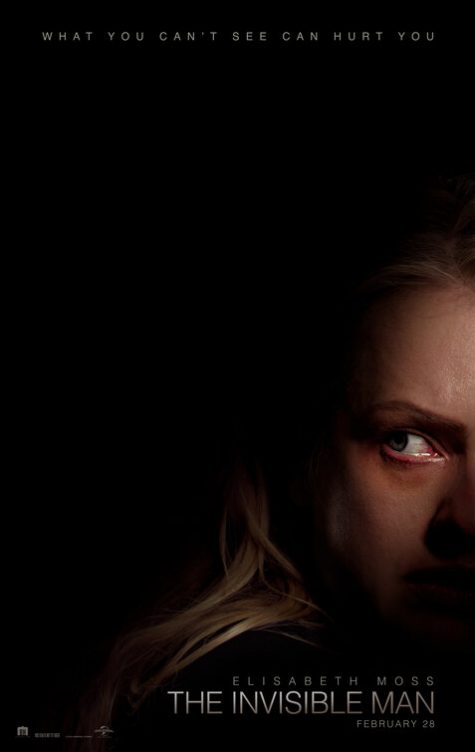
Do we really need another remake of a classic monster movie? Of course, the answer is no, and fortunately, my question doesn’t actually apply here. Although I initially scoffed at the idea of another version of the H.G. Wells tale, this film proved me wrong by only loosely using that source material and instead establishing its own identity. That connection might lure you into the theater, yet the intense experience that expertly mixes genres will keep you glued to your seat. The Invisible Man wraps a mystery in the trappings of a horror film and slowly peels back layer after layer of surprises hidden just out of sight.
Writer/director Leigh Whannell releases a near-perfect movie after lesser experiences with his past two writer/director roles for Insidious: Chapter 3 and Upgrade. Drawing fully upon his experience in horror, Whannell paces the story for incredible reveals and shocking moments that fully earn its R rating. Set in San Francisco, Cecilia Kass (Elisabeth Moss of The Handmaid’s Tale and Mad Men) wants to leave an abusive relationship with genius optics engineer Adrian Griffin (Oliver Jackson-Cohen). After a middle-of-the-night escape into the car of her sister Emily (Harriet Dyer), Cecilia hides out with her friend James Lanier (Aldis Hodge of last year’s death-row drama Clemency) and his daughter Sydney (Storm Reid). Cecilia learns that Adrian killed himself from his lawyer brother Tom (Michael Dorman), who also explains that Adrian left her $5 million. Cecilia still doesn’t feel safe, and when strange things start to happen around her, she’s convinced that Adrian is somehow both alive and causing it. Is Cecilia going insane, or has Adrian figured out a way to torture her sight unseen?
Moss already has an impressive list of performances on her résumé. As one of those actresses who melt into their roles, she runs the gamut of emotions as Cecilia and goes from happy and casual to manic and vengeful. With the entire movie revolving around her character, Moss endures a lot in a physical role that involves many fight sequences and a tense bit in the pouring rain. The strong cast doesn’t merely check the boxes of typical horror movie roles (best friend, etc.), but instead provide believable performances that are crucial to the plot working at all. You don’t see much of Jackson-Cohen, yet in the eventual making-of footage, I bet that they had him on set as the titular character to torment Moss. In another version of this story, James might be the main character as a cop investigating Cecilia’s claims, and he’s just as crucial here. I’m glad to see Reid far away from that awful A Wrinkle in Time, in which her acting was the only element to escape deserved ridicule. Reid doesn’t get quite enough screen time as a supporting character; she makes the most of her scenes.
I suppose that a PG-13 version of this movie could also be exciting, but the horrific elements (blood, violence, heightened tension) establish how real everything is to Cecilia. Early on, Whannell smartly lets you see items move to prove that Cecilia’s suspicions are real. At the same time, you also share her frustration at somehow proving the presence of someone to the people in her life. Terror rules Cecilia’s thoughts as she tries to solve the mystery. Whannell toys with you by setting up sequences that you’ve seen many times before (Cecilia walking slowly through the house or exploring a creepy attic) and adding the MacGuffin of sorts in that there could always be this invisible man right there with her. Brilliant! In most horror movies, tension builds to the reveal of a creature or monster, yet the same feelings here lead to more of the nothing that might be there. A sequence at a hospital will take your breath away with its length and what happens.
The success of The Invisible Man could easily be the culmination of more than 15 years of genre films by Whannell and occasional director James Wan. The duo developed the original Saw, which to date contains one of my favorite and arguably one of the best twists in movie history. They worked on other films in the Saw series, created the Insidious franchise and released an often overlooked feature called Dead Silence. All of that experience with torture, blood, spooky images, moody scenes and detectives investigating murders sets up Whannell to deliver a film that has tendrils stretching back to his earlier projects. The best filmmakers like Wes Anderson, Martin Scorsese and David Lynch stay in their lanes and build upon everything that they learned to apply that signature style to new stories. The Invisible Man flaunts the horror elements in an accessible package that fans of other genres will not avoid.
I called The Invisible Man a near-perfect movie because there are minor plot points that don’t make sense even if you accept the fact that someone invisible may be stalking Cecilia. For example, wouldn’t there be more evidence of this person in a house (footprints in the dust, noises, the toilet seat left up, etc.)? Would Cecilia actually perform certain actions that put her in danger? Every now and then, you’re taken out of the movie for a second, but you’re brought right back in by the pace that keeps going to another level. Most plots for movies like this would end at the one-hour mark, yet Whannell keeps pushing further and wowed me with the reveals and surprises. Benjamin Wallfisch’s score keeps you as unsettled as the story and sometimes reaches loud volume levels to ramp up the intensity. Invisibility fascinates readers and moviegoers with the possibilities for both good and bad. The Invisible Man probes just one man’s use of that power in a cat-and-mouse game that left me smiling and wanting more.



